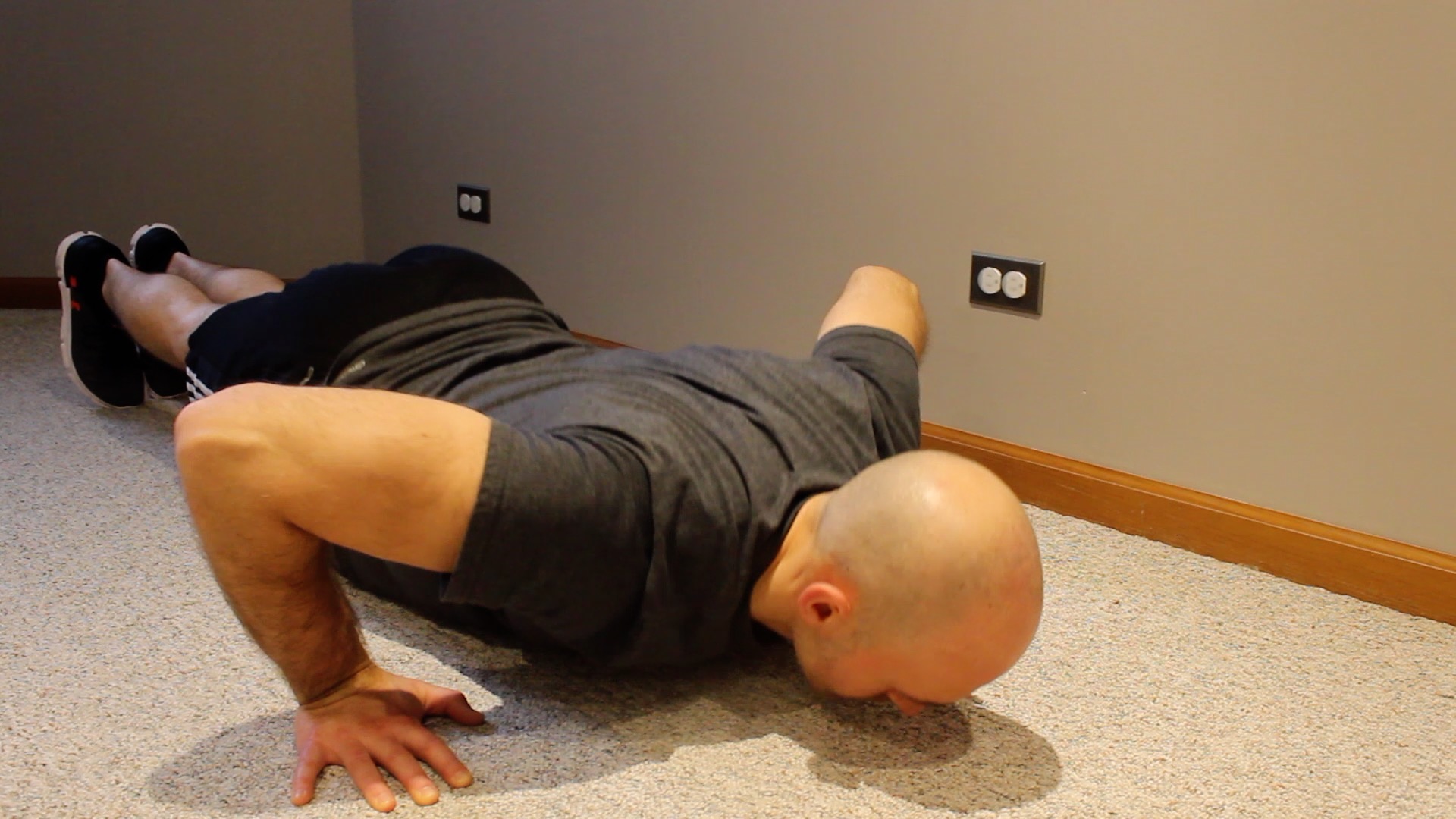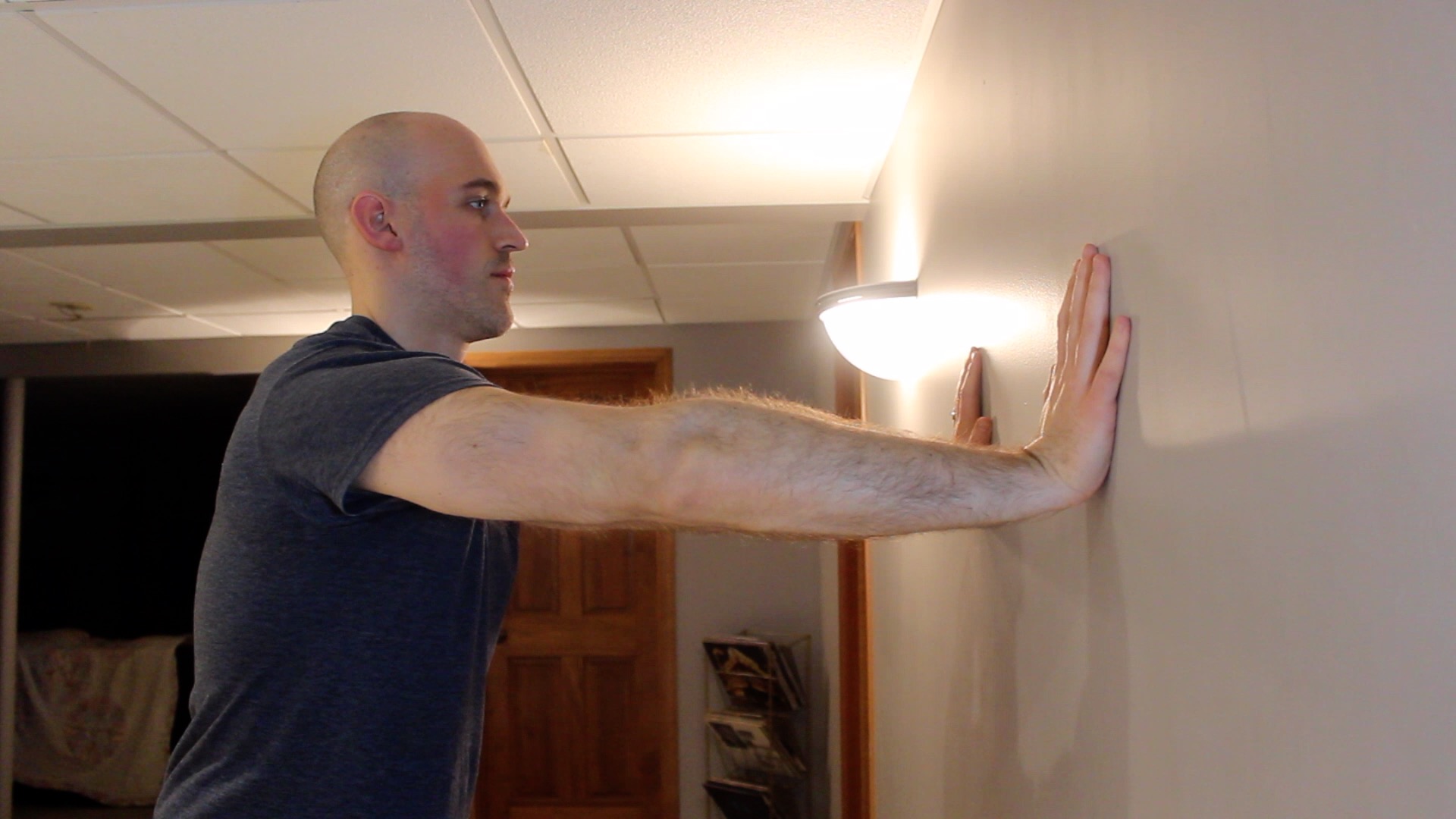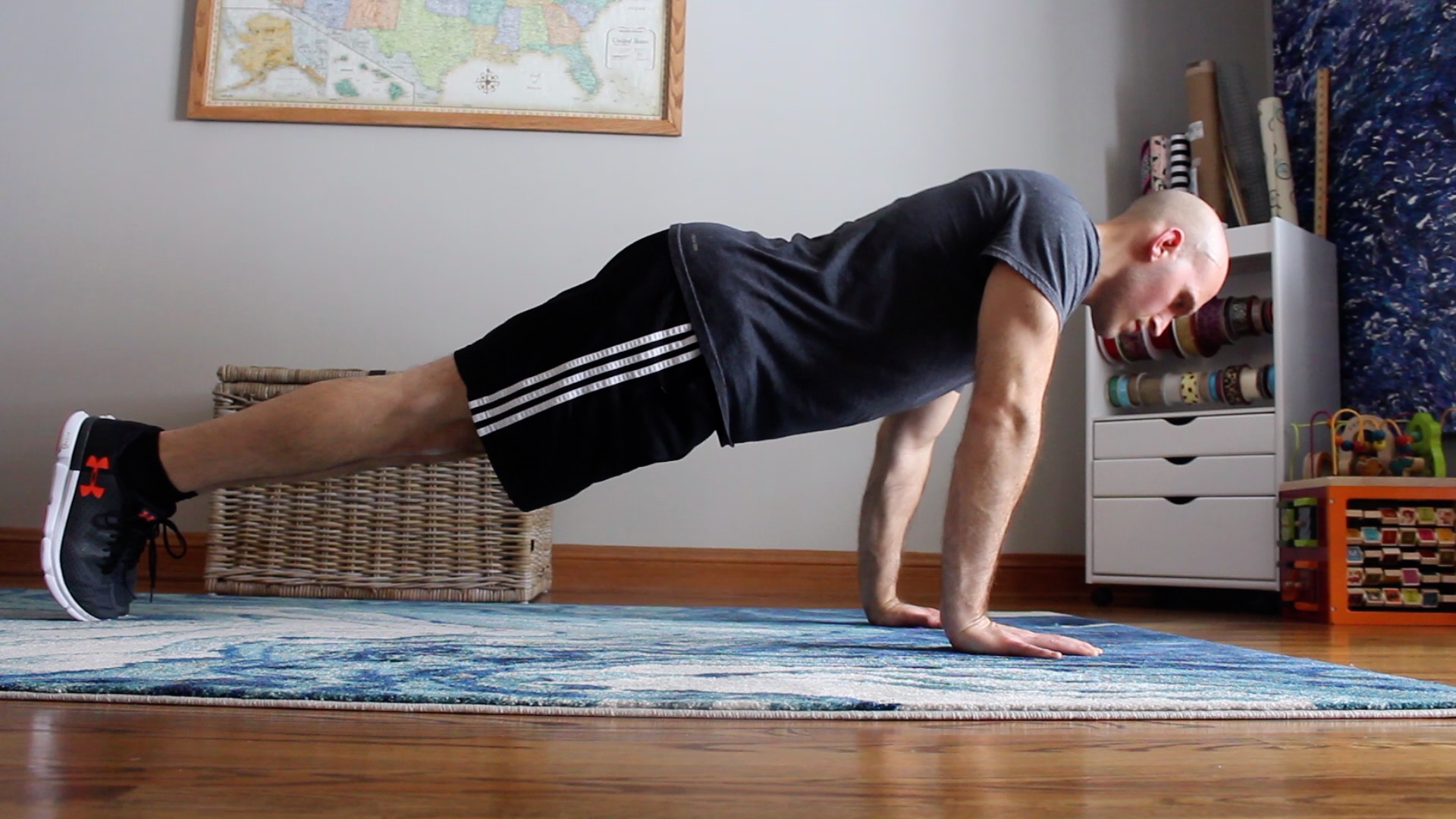
How To Learn Proper Push-up Form
Whether you’re a newbie to fitness or an experienced exerciser, there’s a good chance your push-up form can use some improvement. In this article, I explain how to learn proper push-up form from the ground up so you get the most out of your bodyweight pressing exercises.
In my seventeen years of experience, I can honestly say that I see at least 80% of individuals – maybe even more – doing their push-ups with imperfections that can slow their progress or lead to injury.
Why is this so common? Well, the push-up is by far the most common calisthenics strength exercise. In fact, I bet if you ask anyone what exercise they think of when you say “bodyweight fitness,” push-ups will be one of the first exercises on the tip of their tongue, along with jumping jacks.
Since push-ups are so common, people often include them as a staple in any beginner training routine. And that’s great! Push-ups should be a part of every training routine. However, the proper form shouldn’t be neglected. We should respect the push-up as an exercise that needs as much attention and precision as the pull-up and squat.
The Best Way To Do Push Ups
If you want to learn proper push-up form, first we need to look at the top 3 most common mistakes people make when performing push-ups. Identifying these mistakes and understanding how to correct them will help you learn the best way to do push-ups.
Mistake #1: Flaring The Elbows

In the picture above, notice how my elbows are pointing outward at a wide angle from my body. This is an extremely common push-up form, but it’s actually sub-optimal for performance.
The wider your elbows are spread away from your body, the longer the lever for your foundation of support. And always remember: longer levers are less stable and powerful than shorter levers. So, to improve performance and stability, what you want to do instead is keep your elbows closer in towards your sides like the picture below.

By keeping your elbows tucked in towards your body, you’ll be more stable in your push-up technique. And, by not letting your elbows flare out too much (like 90 degrees from your body), you’re also avoiding possible injury to the shoulders.
Mistake #2: Fast Reps
When starting off with push-ups, a lot of people make the mistake of aiming for high reps. This leads to a sort of “bouncing” pace where they’re relying on momentum to get in those high numbers of reps. Anyone who says they’re able to do 50 pushups? I guarantee they’re relying on momentum and not true strength.
To avoid this, my general rule of thumb is to approach push-ups with this mindset: slow and controlled is always better. Rather than bouncing up and down, make sure each rep is controlled and deliberate. You shouldn’t be relying on the forces of momentum to help you at any point.
My recommendation? Aim for at least 1 second (say “one, one thousand”) on the eccentric motion down to the ground, and another second (“two, one-thousand”) on the concentric motion back up to the top position.
Mistake #3: Sagging At The Hips

Take a look at the picture above. Notice that my lower back and hips are sagging and my body doesn’t form anywhere near a straight line. This is something I see all too often and should be avoided. When doing this, you’re not stabilizing your body and getting the most from your push-ups.
One of the many reasons why the push-up is superior to bench press (or any other weighted form of chest pressing) is because you are engaging your core for stabilization, therefore working more musculature than the bench press. Push-ups force you to stabilize your entire body, whereas in a bench press you’re letting the bench do all the stabilization.
So instead of letting your hips sag, do the following instead:
- Contract the abs
- Tighten the quads (thighs)
- Squeeze the glutes (butt)
Those three cues are how I teach proper push-up alignment to all beginners. If you focus on those three cues every time you do push-ups, your alignment will be nice and straight.

How To Do Push Ups For Beginners
Are you a complete beginner to fitness and want to know how to learn proper push-up form? Are you already doing push-ups but want to improve on them? Either way, look no further than the progressive exercises that follow. This progression is designed to teach you proper form from Day 1 and help you build enough strength to be repping out perfect push-ups in no time!
Progression 1: The Wall Push-up
Start off with your arms extended, hands resting on a wall in front of you. Press hard into the wall to engage scapular protraction, meaning your shoulder blades pull slightly away from each other and your upper back is rounded.

Bend at the elbows to bring yourself closer to the wall until your nose is almost touching it. Elbows should point more downwards than outwards.

Pause for a split second, then push yourself back out to the arms-extended position from which you started. Once you’re able to 20 reps of this without breaking form, you’re ready to move on to the next progression.
Progression 2: The Incline Push-up
Find an elevated surface that’s roughly the height of your knees (this doesn’t have to be exact). A couch, coffee table, stair case, bath tub and other furniture are all possibilities.
Place your hands on the elevated surface and press downwards so arms are straight and scapula protracted. Remember to contract the abs, thighs and butt to maintain a rigid body so the hips don’t sag.

Bend at the elbows, keeping them close to the sides of your body, until your lower chest is just about to touch the elevated surface.

Pause, push yourself back up to the top position and then repeat. Work on this exercise until you’re able to do at least 12 reps with good form.
Before moving on to the standard push-up on the floor, you can do these on an even lower surface. The lower the surface you’re using, the more challenging the push-up, and therefore the more it’s preparing you for going to the floor.
Progression 3: The Standard Push-up
Congrats! At this point, you have the necessary strength to do standard push-ups. Just take everything we’ve gone over about how to learn proper push-up form so far, and apply it while on the ground in a straight-arm plank.
Remember to start off pressing hard into the floor, arms straight and scapula protracted. Tighten your abs, glutes and thighs to keep good alignment throughout.

Bend at the elbows, keeping them close to your body, and lower down as close to the floor as you can.

Press back up to the top position and repeat as many times as possible. And remember to do them slow and controlled!
Become a Push-up Master
And there you have it! When done properly, push-ups are a highly effective calisthenics exercise that are rightfully a staple in all bodyweight fitness routines, and now you know how to achieve them with PERFECT form.
Remember to avoid doing the following:
- Flaring elbows
- Relying on momentum
- Sagging the hips
If you’ve been wondering how to learn proper push-up form, just follow the progressions above and you’ll get it in no time. And remember to contract the abs, thighs and glutes during any push-up exercise to keep the body in as straight of a line as possible.
Good luck and happy training!
Share This Story, Choose Your Platform!